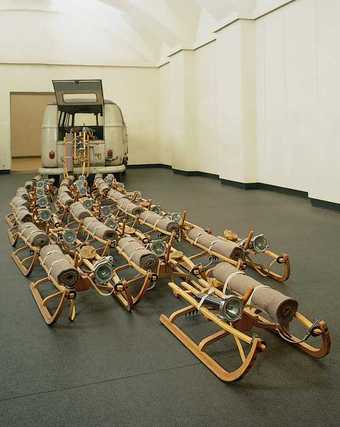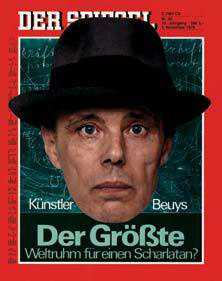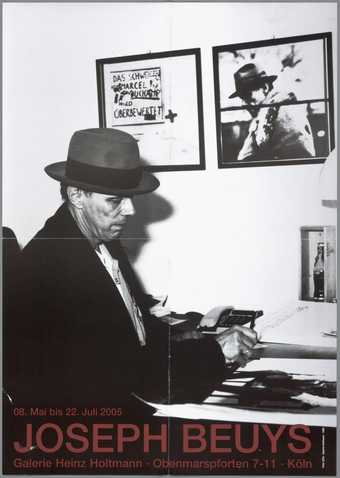Joseph Beuys (1921–1986) believed that it was possible to transform society through the creativity of every individual. He emerged as an artist amid Germany's post-war reconstruction, claiming for art a unique role in the spiritual regeneration of society, in opposition to a materialistic culture. This display shows work by Beuys from the Tate's collection, with the addition of several works made in Scotland and Ireland which demonstrate Beuys's interest in the Celtic world.
Central to Beuys's mission as an artist was his expanded concept of art. A frustrated questioner once shouted at him: 'You talk about everything under the sun, except art!', to which Beuys replied: 'Everything under the sun is art!'
Beuys believed art should be a kind of social sculpture in other words, 'how we mould and shape the world in which we live. Sculpture as an evolutionary process'.
'Everyone is an artist' simply means that the human being is a creative being, that he is creator, and what's more, that he can be productive in different ways. To Beuys, it's irrelevant whether a product comes from a painter, from a sculptor, or from a physicist.
He made sculpture from unusual materials – fat, felt, dust, blood, toenail clippings, filters, preserving jars and X-rays. He believed that these materials could serve as traces of memory and history, and as reminders of the deeper, ancient rituals of our societies.
Beuys took on the role of the shaman, a spiritual leader who protects, guides and heals the tribe, using the energy contained within ordinary materials.
His lectures were a means of communicating directly with audiences in different parts of the world. He used blackboards as a public form of drawing, to illustrate the ideas within the lecture.
In 1974 Beuys first visited Ireland, and these four blackboards are from a lecture he gave then at the Ulster Museum, Belfast. The words indicate some key themes: 'freedom, art, brotherhood, love, socialism, insulation, Transmitter, Receiver, individual freedom' .




